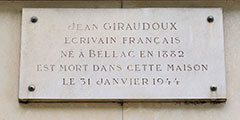The headquarters of the United Nations Educational, Scientific and Cultural Organisation have been based in Paris since its creation.
UNESCO is a UN agency. It was created on November 16th, 1945. It aims to “contribute to the maintenance of international peace and security by tightening cooperation between nations through education, science and culture, in order to ensure universal respect of justice, law, Human Rights and fundamental freedoms for all, which are affirmed for the peoples of the world, without distinction as to race, sex, language or religion, by the Charter of the United Nations”. The Preamble of UNESCO’s Constitution, it is also reminded that “since wars begin in the minds of men, it is in the minds of men that the defences of peace must be constructed”. Today, 195 states are members and 8 are associate members. Palestine was the last state to become a member in 2011.
UNESCO headquarters are located in a “y” shaped building, standing on 72 concrete piles. It was inaugurated in 1958. An annexe was added afterwards, in rue Miollis: it hosts several departments and the offices for member states’ delegations.
The buildings and the gardens of UNESCO house numerous contemporary art works such as murals by Picasso and Miró, Totes les coses by Tapies, Freedom by Abelardo Espejo Tramblin and The Symbolic Globe by Erik Reitzel, as well as pieces by Alexander Calder, Bazaine, Giacometti, Le Corbusier, Henry Moore, Takis and Tsereteli.
The visitors should not miss, particularly in the gardens, places devoted to the organisation’s values such as the Garden of Peace by Isamu Noguchi and the Square of Tolerance by Dani Karavan.
Regarding the specific field of peace and non-violence, the organisation gets help from UNESCO artists for Peace to raise awareness about its work among the public. Since 1981, it awards every year a Prize for Peace Education. It incited the UN to declare the year 2000 “International Year for the Culture of Peace” and was chosen as the leader of the International Decade for the Promotion of a Culture of Peace and Non-Violence for the Children of the World (2001-2010). In 2012, an intersectoral platform on dialogue and a culture of peace was created within the organisation in order to continue the work on this subject during the Decade.







 6 minutes
6 minutes






